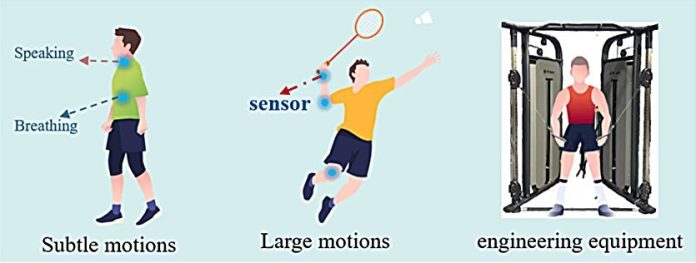
Scientists in China have created a new kind of soft, stretchable foam that could transform how we track body movement, monitor health, and interact with machines.
The new material, developed by a research team led by Professor Wang Long at the Ningbo Institute of Materials Technology and Engineering, is both highly sensitive and durable.
The study was recently published in Materials Today Physics.
The foam works as a sensor, detecting changes in pressure or stretch by measuring electrical resistance.
Known as a piezoresistive strain sensor, this type of technology can be used to sense human movement, touch, or changes in body position.
Traditional sensors made from similar materials often struggle to stretch without breaking or losing their electrical properties.
This limits their ability to respond accurately to a wide range of movements—especially larger ones.
To solve this problem, the researchers used a special foaming technique called supercritical carbon dioxide (scCO₂) foaming.
This method allowed them to carefully introduce tiny air pockets into the foam while keeping its structure strong and conductive.
The foam is made from a flexible rubber-like plastic called polyolefin elastomer (POE), combined with long, thin carbon nanostructures (CNS) that carry electricity.
These materials were arranged in a “segregated” structure, meaning the carbon parts were clustered together in a way that formed more efficient electrical pathways.
The result is a highly stretchable and reliable sensor that can stretch up to more than nine times its original length—an impressive 952%—and still work.
Even after being stretched and released 4,000 times, the foam continued to function well, showing only minimal wear.
It can sense very small movements as low as 0.5% strain and as high as 762%, far outperforming many existing sensors that use randomly mixed materials.
What’s more, the production method is simple and environmentally friendly, using scCO₂ instead of toxic chemicals.
This makes the new foam sensor not just effective but also sustainable.
Thanks to its flexibility, sensitivity, and long life, this smart foam could be a game-changer for wearable electronics, soft robotics, health monitoring devices, and even human-robot interaction tools.
In the future, you might find this kind of material helping your smartwatch track your workout or enabling lifelike movement in robotic limbs.



